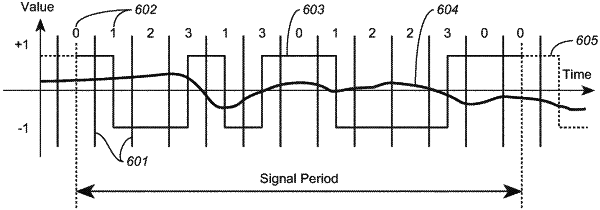| CPC G01S 19/22 (2013.01) [G01S 19/29 (2013.01); G01S 19/30 (2013.01); G01S 19/37 (2013.01); G01S 19/393 (2019.08); G01S 19/43 (2013.01)] | 4 Claims |

|
1. In a receiver, a method for detecting an earliest arrival time among one or more components of a digitized complex-valued received signal, the received signal being a periodic PRN code-modulated signal, wherein each component of the received signal arrives at the receiver over one of multiple signal paths, the method comprising:
(i) dividing each period of the received signal into sections;
(ii) assigning to each section one of a plurality of code categories, each assigned code category corresponding to a signal pattern of the corresponding portion of the periodic PRN code within the section;
(iii) selecting an assigned code category corresponding to a signal pattern that includes at least one signal transition in the real portion of PRN code
(iv) accumulating sample values of sections corresponding the assigned code category over one or more periods of the PRN code, the real and imaginary parts of the sample values being accumulating separately;
(v) detecting the signal transition in the accumulated sample values of the real portion, and detecting a peak value in the accumulated sample values of the imaginary portion that precedes the signal transition in the real portion; and
(vi) deeming the peak value's time of arrival to be the detected earliest arrival time.
|